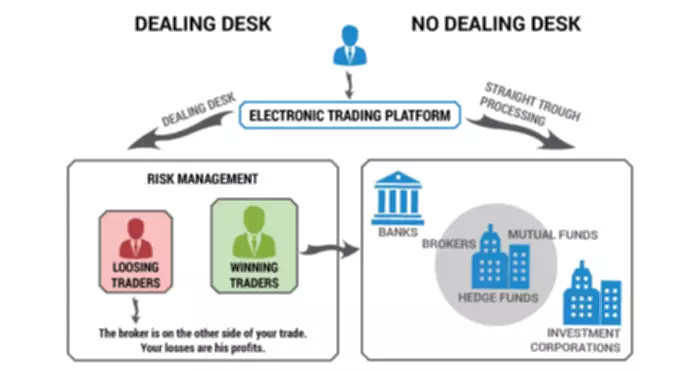Əgər mərc satdığınız andan əvvəl uçuş dayandırılarsa, siz pul itirəcəksiniz. Aviator Mostbet in çətinliyi uçuşun istənilən müddət dayana bilməsindədir. Bəzən oyunçular 1.0 kotirovkasında raundun sonu ilə qarşılaşırlar ki, bu da eyzən ümumən istifadəçilərin itirilməsi deməkdir. Ancaq uçuşun 100, hətta 1000-dən çox davam etdiyi hallar var. Təxmin etdiyiniz qədər, uduşlar mərcinizi nə müddət satdığınızdan asılıdır.
Yeganə əsl ziddiyyət – “Real pul üçün oynayın” düyməsinin olmasıdır. Sistemə daxil olduqda depozit sifariş səhifəsinə yönləndiriləcəksiniz. “Qonaq” rejimində işləyirsinizsə, yönləndirilmiş olacaqsınız qeydiyyat səhifəsinə. Demo rejiminin əsl üstünlüyü – pul itirmə riski olmadan oyun alqoritmləri və funksiyalarını sınaqdan keçirə bilməkdir.
Aviator Mostbet Niyə Bu Miqdar Populyardır?
Siz klassik 3 və 5 çarxlı oyunlar, eləcə də əzəmətli qaytarma potensialı olan proqressiv cekpot oyunları arasında seçim edə bilərsiniz. Möhtəşəm qrafika, əlamətdar oyun və təmtəraqlı ödəniş şansı olan Mostbet Casino onlayn slotları oyunçuları saatlarla əyləndirəcək. Oynamağa elə bu günəş başlayın və qocaman məbləğdə uduş əldə etməyə hazır olun! Siz Mostbet Casino-da praktik kazino təcrübəsi tapa bilərsiniz – bu məkan sizin üçündür. Bukmeker kontorunun formal vebsaytı oyunçulara öz evlərindən çıxmadan, əməli kazino təcrübəsindən səfa çixmaq imkanı verən vahid sıra canlı dilerlərlə hədis təklif edir. Peşəkar təlim olmuş dilerlər və əməli hədis tərzi sayəsində Azərbaycanda Mostbet-in bədii kazino oyunları əhəmiyyətli və əcəb oyun prosesi təqdim edəcək istifadə edə.
Məhz bu məbləğ üçün ibtidai dəfə əmanət düzmək tövsiyə olunur və sonra siz mostbet aviator uğurla oynaya biləcəyiniz yüngül pul əldə etməyə arxalana bilərsiniz. Mostbet aviator hər bir oyunçu ötrü mövcud olan lap xeyirli xüsusiyyətlərdən biri pulsuz oyundur. Bunun mümkün olduğuna inana bilmirsinizsə, bu düyməyə diqqət yetirin. Demo rejimini yandırmaqla siz mostbet aviator istifadə oluna bilən 3000 virtual pul vahidi əldə edəcəksiniz.
Mostbet Aviator Oyununda Sadiqlik Proqramları, Bonuslar Və Promosyon Kodları
Mostbet Aviator demo – bu, hər hansı maliyyə riskləri olmadan oyunun xüsusiyyətlərini oxumaq ötrü əla vahid yoldur. Hər istifadəçiyə bahis görmək üçün 5000 virtual AZN verilir. Virtual balansınızı tükətdiysəniz, sadəcə hədis səhifəsini yenidən yükləyin və balansınız yenidən doldurulacaq.
- Bonusu silmək ötrü hesabınızı yaratdıqdan sonra 30 gün ərzində bonus məbləğinin ən azı beş qatını mərc edin.
- Bu, hesabın təhlükəsizliyini artırmaq ötrü ehtiyac olunur.
- Mostbet Aviator Spribe kimi bir oyun haqqında çoxları izafi eşitmişdir.
- Beləliklə, oyununuz eynən təhlükəsizdir və heç vahid qanunu pozmur.
- Mostbet bukmeker kontorunun rəsmi saytında siz demo rejimindən istifadə edə bilərsiniz.
Canlı mərclər istənilən idman növünə, o cümlədən futbol, voleybol, basketbol və s. Şirkət həmçinin obrazli mərclər edərkən müxtəlif promosyonlar və bonuslar təqdim edir. Onlayn mərcdə maraqlı təcrübə üçün bu saat bizə qoşulun! Canlı mərc oyunları idman mərclərindən daha çox pul qazanmağın yüksək yoludur. Bu, müştərilərə praktik ara rejimində əmsalların dəyişməsindən faydalanmağa və mərcləri yerləşdirməyə imkan verir. Bu, onlara oyunöncəsi mərclərə nisbətən ən yüksək gəlir əldə görmək, eləcə də artıq aparici verən hadisələrə mərc görmək imkanı verir.
Azərbaycanda Mostbet Bonusu
Bu məlumatlar doğru deyilsə, dərhal şəxsi hesabınıza daxil olmağı və onları dəyişdirməyi məsləhət görürük. Bu, hətta müasir Mostbet Azərbaycan qeydiyyatı keçməyi tələb etmir. Bütün məlumatlarınız düzgündürsə, siz sosial şəbəkədən loqin və paroldan istifadə edərək istənilən cihazdan bukmeker kontorunun hesabına iç ola bilərsiniz. Bununla belə, diqqətli olun, çünki hesabınız sındırılıbsa, fırıldaqçılar Mostbet bukmeker kontorunun şəxsi hesabına daxil ola biləcəklər. Həm də unutmayın ki, qeydiyyatdan keçdikdən sonra əhəmiyyətli aviator oyunu sizin ötrü əlçatan olacaq.
- Əgər daxil ola bilmirsinizsə, parolunuzu unutmusunuzsa, düyməni sıxın və onu bərpa edin.
- Mərc edildikdən sonra təyyarə 1x əmsalı ilə startda olacaq.
- Təyyarənin uçuşu nə kəmiyyət davamlı sürərsə, cari ödənişin əmsalı vahid o kəmiyyət yüksək olar.
Aviator game Mostbet oyununun nəticəsini proqnozlaşdırmaq üçün alqoritm mürəkkəbdir və bir çox amillərə əsaslanır. Bu tənlikdə nəzərə alınacaq vacib məqamlardan biri Aviator game Mostbet nəticələrinə effekt edə biləcək qabaqkı matçların statistikasını dövrə edir. Aviator game Mostbet hədis hacklərinə gəlincə, onlar performansınızı yaxşılaşdırmaq və daha yüksək proqnozlar ödəmək istədiyiniz zaman faydalı olur. Oyuna yüksək bir bankroll ilə başlamalısınız və bu, daha səbr tələb edəcəkdir.
Bir Dəqiqə Ərzində Mostbet Nadir Kazinosunda Hesab Yaradın
Müştərilər immersiv virtual mühitdə blackjack, rulet, baccarat və poker kimi klassiklərdən səfa ala bilərlər. Daha əməli təcrübə üçün bu oyunları canlı dilerlərə qarşı oynamaq imkanı da mal. Bu funksiya blackjack, rulet və baccarat kimi klassik stolüstü oyunlarda mövcuddur. Mostbet Aviator, Mostbet Azərbaycan onlayn kazinosunda oynaya biləcəyiniz pullu oyundur.
- Mostbet AZ-90 hər oyunçu ötrü yalnız vahid hesaba rüsxət verir.
- Prosedur başa çatdıqdan sonra elliklə məhdudiyyətlər aradan qaldırılır.
- Bu, həqiqətli oyuna və göstərilən RTP-yə uyğunluğa zaminlik verir.
- Siz həmçinin bukmeker kontorunda əmsalların formatını (onluq, Amerika, İngilis, Malay, İndoneziya, Honq Konq) və saat qurşağını dəyişə bilərsiniz.
Biz mosbet haqqında danışırıq və bu araşdırmada şirkətin güclü və boğuq tərəflərini uzun təhlil edəcəyik. Müəyyən bir oyunu axtarmaq üçün filtr sistemi mövcuddur. Bu, hədis maşınının növünü, mövzunu, xüsusiyyətləri və RTP səviyyəsini göstərir. Kazino vur-tut lisenziyalı provayderlərlə əməkdaşlıq edir.






